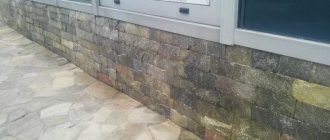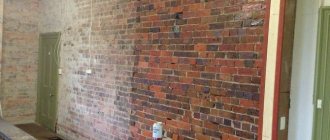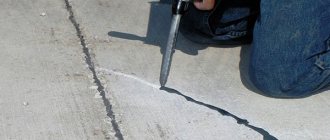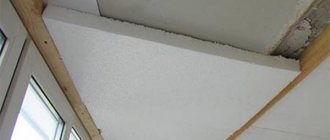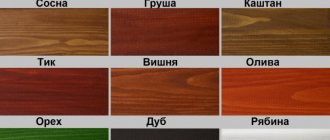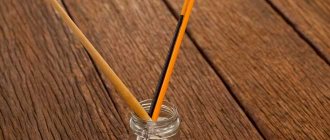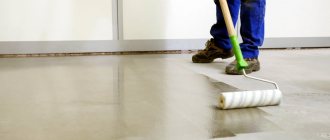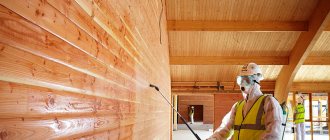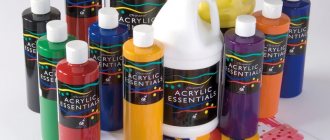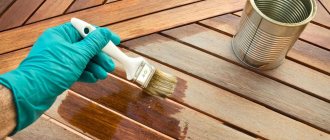Beton-House.com
Website about concrete: construction, characteristics, design. We combine the experience of professionals and private craftsmen in one place
Finished countertop
Concrete is strong, durable, and most importantly, a material accessible to everyone. You can use it to build a real skyscraper, make a solid floor or a reliable countertop for a kitchen set. The cold roughness and brutality of concrete can be easily cut with the help of baptism, grinding or varnish.
The latter not only gives it excellent decorative qualities, but also extends its service life several times. We will look at how to choose and use concrete varnish correctly “under a microscope” from different viewing angles in our publication.
- Acrylic and silicone resins as a base for varnish
- Technology of applying varnish to a concrete base
Types of varnishes for concrete
The criteria for choosing varnish are as follows:
- What surface will you paint;
- How often will it be subjected to mechanical stress;
- What influences (weather, chemical) will the varnish be exposed to and to what extent;
- What are the aesthetic requirements;
- The varnish goes directly onto concrete or paint;
- How much do you want to invest in varnish?
These are all very important factors and need to be taken into account when shopping.
You can focus on price, brand, or recommendations from reviews or tests of concrete varnishes. Or get advice directly in the store, if it is a specialized store and you are confident in the knowledge of the staff.
Color and various additives
When choosing when to cover an important area, pay attention to the decorative properties. The color scheme helps to add the necessary addition to the interior; varnishes can give a tint change.
But the coating also differs in the resulting effect: gloss, matte, semi-matte and semi-gloss. Here you should choose based on the design and preferences of the owner of the room.
The color scheme helps to add the necessary addition to the interior; varnishes can give a tint change.
Why varnish concrete surfaces?
Concrete is ubiquitous today, but most structures are not very aesthetic and not pleasing to the eye - quite the opposite.
- Therefore, improved appearance is an important, but not the only reason to coat concrete surfaces.
- Typically, customers are guided by more practical motives.
- Using a coating, you can increase the surface's resistance to weather and chemical influences.
- For example, a varnished concrete floor is much easier to keep clean and easier to clean.
- The reason may also be a decrease in the amount of dust. The varnish serves as a protective layer.
The composition of concrete varnishes varies from polyurethane, acrylic, silicone or a mixture of these components. According to the result, they come in glossy and matte finishes; recently, semi-gloss options have become popular. There are varnishes for concrete, colorless and tinted.
Recommendations
When working with concrete, it is better to use polyurethane products. It would be justified to apply it to the foundation and load-bearing walls, since the substance has the highest protection against moisture among other varnishes.
Acrylic and silicone substances are excellent for products made of artificial materials and interior wall decoration. They enhance aesthetic appearance and provide enhanced protection.
Polymer varnish is much cheaper and has the widest application. Can be used both for exterior work and for interior finishing of any materials.
Choose by surface
Concrete floors in a garage or auto repair shop will require a varnish with completely different properties than, for example, concrete fence posts or a terrace. When choosing, you need to consider what resistance the varnish has and for what conditions it is intended.
In a garage or workshop, you will need paint that can withstand very high mechanical stress; regular paint or even universal paint will not withstand.
- After mechanical resistance, another issue is resistance to weathering and chemicals.
- The first will be important when painting external surfaces, the second - in the case of garages or workshops, where the surface may come into contact with gasoline, oils, equipment varnishes, thinners and other chemicals.
- Varnishes for frequently used surfaces are quite resistant to such influences - unlike universal and varnishes for vertical surfaces - but you have to count on a higher price.
However, it is worth achieving quality and cladding correctly, and the coating will last a long time. Working with cheap varnishes can be much more expensive, not to mention the inconvenience and hassle.
Concrete varnishing
When finishing concrete surfaces, you can use acrylic or epoxy varnishes, which differ significantly in their properties.
Acrylic silicone varnishes are a popular choice due to their affordability and can be used on general surfaces such as concrete walls or even light-duty floors. These can be floors on terraces, balconies, basements, etc. They are waterproof, so they are also suitable for outdoor use.
- For more stressed surfaces, epoxy varnishes are a more suitable choice.
- As a rule, they are distinguished by significantly greater or extreme resistance to both mechanical stress and chemicals.
- Moreover, they are easy to care for. However, the disadvantage may be the relatively high price.
- Two-part epoxy varnishes are a popular choice today for surfaces subject to stress.
This varnish can be used for:
- Treatment of concrete floors inside buildings. After application it forms a colorless glossy coating that is easy to clean;
- Treatments of previously painted floors;
- Treatments of floors subject to mechanical and chemical stress, i.e. floors in production workshops, warehouses, garages, workshops with pedestrian and vehicular traffic.
Areas of application of protective equipment
Such finishing materials can be used in parking areas.
Varnish for concrete and stone is the optimal chemical for extending the life of a building structure. The paint and varnish substance protects concrete surfaces from many factors of destruction. It is used in all areas of construction, and mainly for fencing buildings made of concrete, large warehouses, hangars, parking lots and parking lots. The varnish is also used for production facilities that belong to the industrial or pharmaceutical fields, to cover structures that are susceptible to climatic influences, such as bridges, walking paths, squares, parks.
Water-based concrete varnish is used for interior and exterior work. This product is used to treat decorative surfaces made of stone and brick, floors and other structural elements with a concrete base.
Surface preparation
If you want the varnish to stick really well to the concrete surface and not start to peel off and lose its attractive appearance, you need to carefully prepare the surface.
This will also reduce the cost of expensive paints when applying varnish to a painted surface, for which you might otherwise "pay" unnecessarily large sums. Concrete is relatively demanding when it comes to painting and varnishing.
The basis for high-quality varnish application is thorough cleaning and degreasing of the surface. Concrete must be varnished completely dry. In the case of a new concrete screed, it must be sufficiently mature; in the case of an older one, first remove the remains of the previous coating and seal cracks and holes, for example with sealant.
Penetration
Penetration is a very important stage. If you varnish the concrete directly, you will use a lot of it and risk poor adhesion of the varnish, which will quickly crack.
Pre-penetration is affordable, and its use can significantly reduce the consumption of more expensive varnishes. This pre-coat provides bonding and surface protection. This will make it easier to apply the paint. Penetrate with a brush, not a roller.
Related discussions
Unfinished concrete ceiling - leave as is
3675839?n=4 If you don’t currently have concrete, but you want to give it the appearance of concrete, then now there are many decorative plasters for concrete
